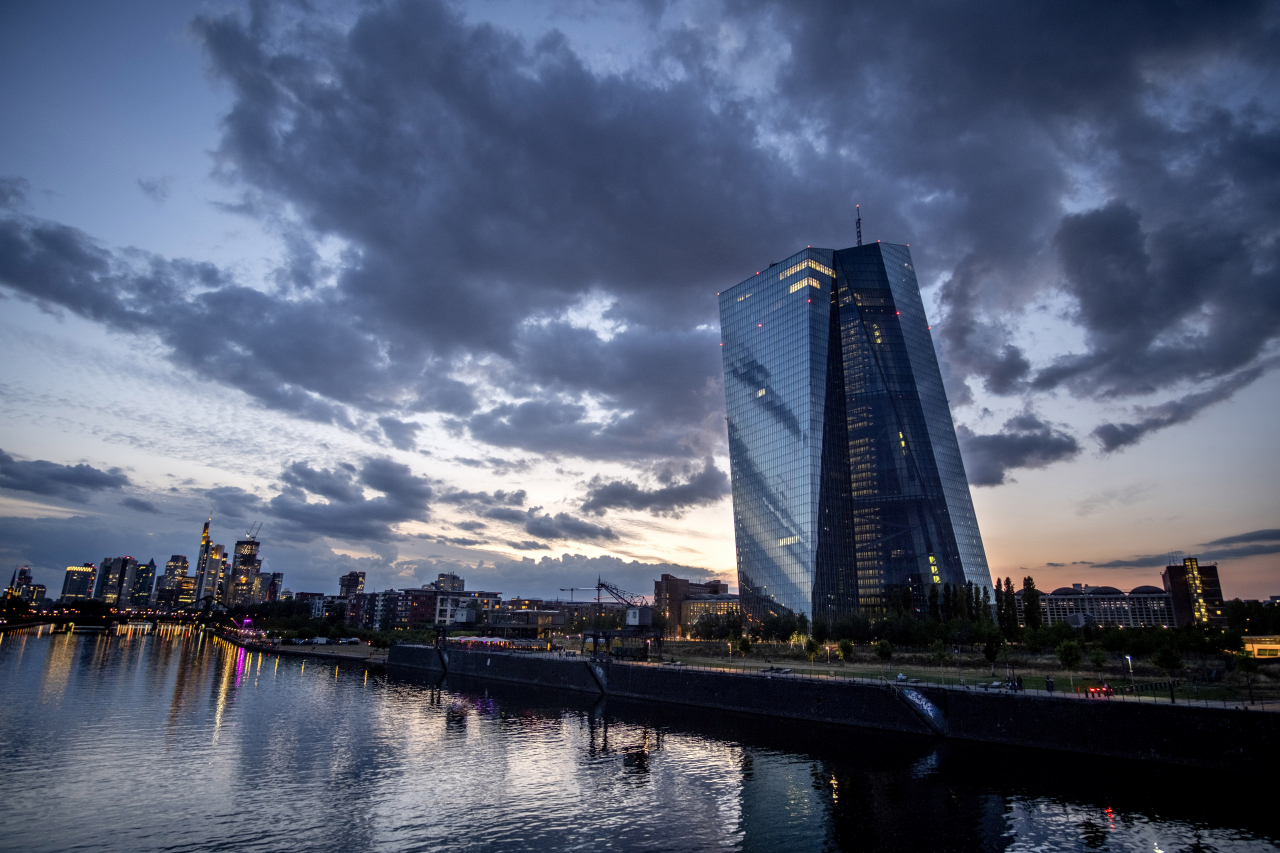 |
The European Central Bank is pictured in Frankfurt, Germany, Wednesday, July 26, 2023. The governing council of the ECB will meet on Thursday, July 27, 2023. (AP Photo/Michael Probst) |
The European Central Bank raised interest rates for the ninth straight time in its yearlong campaign to stamp out painfully high inflation, even as worries about recession fuel speculation that Thursday’s hike could be its last.
ECB President Christine Lagarde had all but promised the quarter-percentage point increase. That puts the focus at her post-meeting news conference on whether the bank will raise rates again at its September meeting or hold off after a record series of rate hikes.
Central banks around the world have been raising borrowing costs to combat inflation unleashed by higher energy prices after Russia invaded Ukraine and supply chain backups as the global economy recovered from the coronavirus pandemic.
Now, the question is whether the rapid rate hikes are reaching their end.
The ECB move followed a decision by the U.S. Federal Reserve on Wednesday to raise its key rate for the 11th time in 17 months. Fed Chair Jerome Powell was noncommittal about whether more rate increases might be coming, though inflation is lower in the U.S. -- at 3% -- than it is in Europe.
Inflation in the eurozone has fallen from its peak of 10.6% in October to 5.5% in June, still well above the bank’s target of 2% considered best for the economy.
Households and businesses are facing a double hit from price spikes and higher rates, which make it more expensive for people to get loans to buy homes and cars or for companies to get new equipment or build facilities.
Rates are working their way through the economy, weighing on home prices and construction activity, and are designed to work so people spend less and prices come down. But they can also weigh on economic growth, and the eurozone already has seen back-to-back quarters of contraction .
With Thursday’s quarter-point increase, the ECB has raised its benchmark deposit rate from minus 0.5% to 3.75% in one year, the fastest credit tightening since the euro currency was launched in 1999.
The rate hikes are already working: House prices have started to decline after a yearslong rally, while business loans are at their lowest level since statistics started in 2003. The outlook for construction companies in Germany also hit its lowest level since 2010.
Fears about recession are focusing on Germany, Europe’s industrial powerhouse and largest economy. It is the only developed economy that the International Monetary Fund expects to shrink this year.
Germany already has recorded two straight quarters of falling economic output, meeting one definition of recession. It might have seen a third, with figures for the April-to-June period coming out Friday.
The German economy is going through a “slowcession” -- “stuck in the twilight zone between stagnation and recession,” says Carsten Brzeski, chief eurozone economist at ING Bank.
The whole eurozone economy also shrank slightly in the first three months of the year, likewise the second straight quarterly decline. Preliminary figures for the second quarter are due Monday.
The economists on the euro area business cycle dating committee, which declares recessions, use a broader set of data than just two quarters of shrinking output figures in its decisions. The committee said June 30 that talk of a eurozone recession was “premature” given record low unemployment of 6.5%.
ECB officials say getting tough on inflation now avoids even more drastic credit restrictions later if inflation becomes ingrained through expectations for higher wages and prices. (AP)







![[Today’s K-pop] Blackpink’s Jennie, Lisa invited to Coachella as solo acts](http://res.heraldm.com/phpwas/restmb_idxmake.php?idx=644&simg=/content/image/2024/11/21/20241121050099_0.jpg)